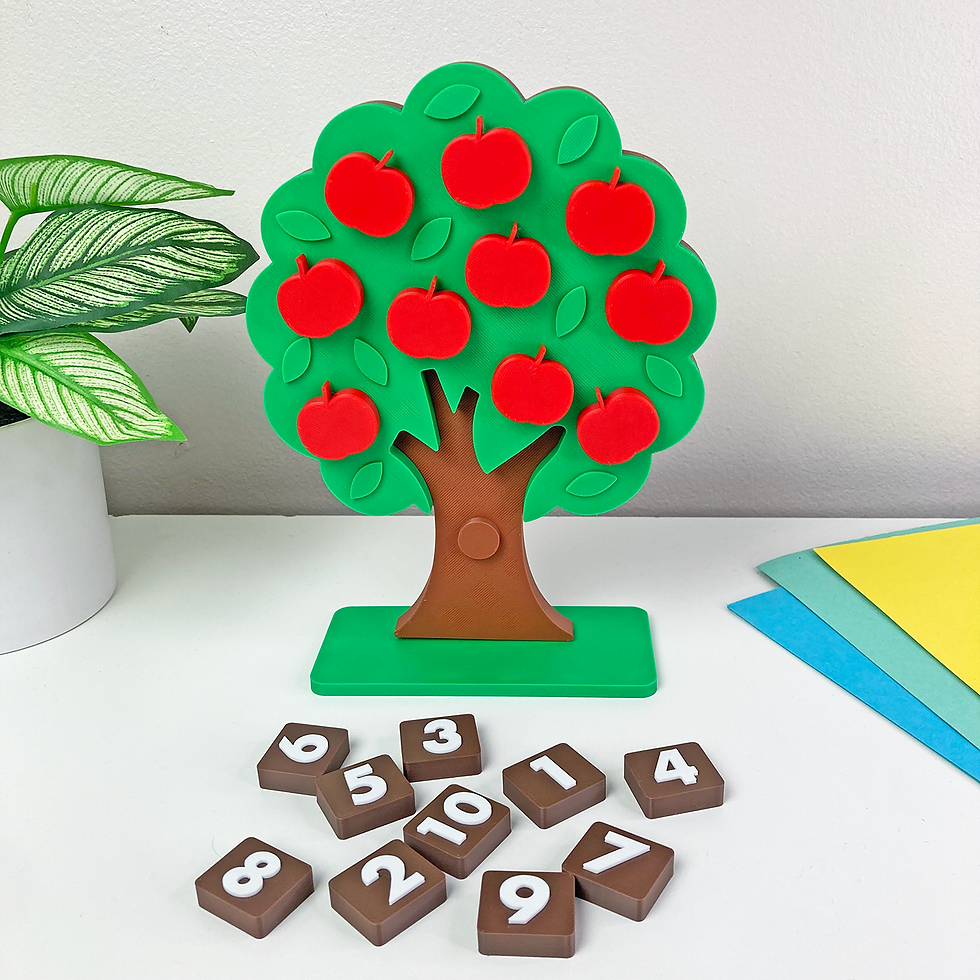🐜 Buildable Ant: Learn Ant Anatomy the Fun Way!
- Fun House Toys

- Aug 14
- 5 min read
Updated: Sep 9
Ants are amazing little creatures that work together, build homes, and carry things much heavier than themselves! With our Buildable Ant Model, kids can explore the different parts of an ant’s body while building their very own 3D model. This activity is perfect for hands-on learning at home or in the classroom!
This activity is designed for grades 2–5, aligning with school science standards for insect anatomy and life science. Kids will not only learn what makes ants unique but will also improve their problem-solving skills, fine motor coordination, and scientific vocabulary.

A Sustainable Learning Experience
Unlike our previous printable crafts, this model is part of our new Science Craft Collection. It is made from sustainable, non-toxic PLA material. These models are durable, display-ready, and perfect for homeschool, classroom settings, or weekend science fun at home.
And yes—while this version is a ready-to-go physical product available in our shop, we still include a free black-and-white worksheet version at the end of this post. This allows your little learners to color, cut, and label on paper too!
🐜 Parts of an Ant
Just like other insects, ants have three main body parts—and each part has its own special job.
1. Head
The head holds the brain, eyes, and mouthparts. Ants use their strong jaws (called mandibles) to carry food, dig tunnels, and protect their colony.
2. Thorax
The middle part of the ant’s body is called the thorax. This is where the legs are attached. The thorax works like a “power center,” helping the ant move quickly and carry heavy loads.
3. Abdomen
The abdomen contains important organs, including the stomach and heart. This is where ants store food before sharing it with others in their colony.
ADVERTISMENT
Other Important Parts
Antennae
Ants have two antennae on their head that help them smell, touch, and communicate with other ants. It’s like having built-in GPS and a walkie-talkie!
Legs
Ants have six legs, all attached to the thorax. They’re speedy runners—some ants can travel up to 3 inches per second!
We have a shortlist of favorite science crafts like Layers of Atmosphere, Inner Earth Layers, Anatomy of a Volcano, and Layer of the Ocean. This activity is sure to become a new favorite. It comes together quickly and is packed with educational insight.
It’s beneficial for:
Visual learners who love building and seeing how things fit together.
Kids studying earth science, human body, or life science.
Homeschoolers and teachers needing hands-on activities for science units.
Gifted kids who enjoy tactile puzzles with an educational twist.

Step-by-Step Instructions: How to Build the Ant Model
Our buildable ant kit is super easy to assemble, perfect for little hands!
Materials Needed: Just your hands and your curiosity!
Start with the Head and Thorax – Take the head piece and click the thorax right behind the head; this is where the legs will connect.
Attach the Abdomen – Click the abdomen at the back to complete the three main body sections.
Insert the Antennae – Place the two antenna pieces on top of the head.
Add the Six Legs – Attach three legs on each side of the thorax.
With just a few clicks, your ant is ready to explore—just like the real ones!
🌍 Real-World Ant Facts for Kids
There are over 12,000 known ant species worldwide.
Ants can lift 50 times their body weight—that’s like a kid lifting a car!
Ant colonies work together like a superorganism, with each ant playing a role.
Ants don’t have ears; they feel vibrations through their legs and body.
ADVERTISMENT
❓ Guided Questions & Answers During the Activity
Q1: Which body part helps ants carry food?
A: The head, with its strong mandibles (jaws), is used for carrying food, digging tunnels, and protecting the colony.
Q2: Why are antennae important for survival?
A: Ants use their antennae to smell, touch, and communicate with other ants, helping them find food and stay safe.
Q3: How do the legs attach to the thorax?
A: All six legs connect directly to the thorax, which acts like the ant’s middle “power section” for movement.
Q4: What is the main job of the abdomen?
A: The abdomen holds important organs, stores food, and helps ants digest what they eat.
Q5: Can you name another insect that has three body parts?
A: Yes! Bees, butterflies, and grasshoppers also have a head, thorax, and abdomen just like ants.
Q6: How strong is an ant compared to its size?
A: Ants can carry up to 50 times their own body weight—like a kid lifting a car!
This activity helps kids not only see and feel how nature works but also start asking big questions about life, science, and themselves. Whether you’re a parent, teacher, or homeschooler, our kits make learning memorable, fun, and educational! Let us know how your learning adventure goes!
ADVERTISMENT
🎯 Benefits of Hands-On Learning with the Buildable Ant
Hands-on science activities like our 3D buildable ant model help kids visualize and remember complex concepts. Instead of just reading about ants in a textbook, children can:
See each body part up close.
Touch and move the pieces to understand how they fit together.
Build vocabulary by labeling each section during assembly.
This combination of tactile learning, visual cues, and storytelling helps boost retention, encourage curiosity, and make science fun.
💡 Tips for Parents & Teachers
Compare the ant model with a real-life photo of ants.
Take the model outside and watch live ants at work.
Encourage kids to journal their observations.
Use magnifying glasses for a close-up view.
ADVERTISMENT
Try These Science Crafts
All of these crafts can be made with no prep to make your activity planning even easier!
Layers of Atmosphere - Layers of the Earth Space.
Inner Earth Layers - Layers of the Earth Inner Core.
Anatomy of a Volcano - Explore volcanoes in a fun and educational way.
Milky Way Spiral - Journey through our Galaxy.
ADVERTISMENT
♻️ Built for the Planet and Built to Last
All of our 3D science models are crafted using PLA, a material derived from plants like corn. This means they are:
Non-toxic
Biodegradable
Safe for kids
Eco-friendly
Just like every item in our shop, the Ants is designed, hand-drawn, and printed by our family-owned team right here in Georgia, USA. We love creating tools that make science more accessible and fun!
Not ready to commit to the 3D version just yet? We’ve got you covered! Click on the printer icon to download a FREE black-and-white worksheet version. It’s perfect for coloring, cutting, and reviewing through paper-based fun.
Our Goal
Our goal is to make learning exciting, engaging, and hands-on. With this ant model, your child can build, learn, and imagine.
Love this printable?
Join our community on social media and be the first to discover exciting new activities, exclusive freebies, and limited-time discounts. Follow us, and let’s make learning even more fun and creative together!
ADVERTISMENT




















